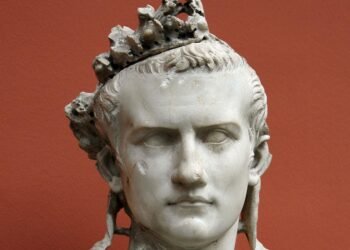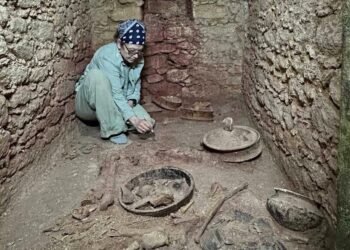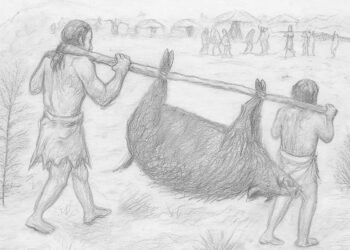In a significant archaeological discovery, the statue of “Dancing Moses,” a captivating figure from ancient mythology, has emerged in Turkey’s ancient city of Stratonikeia after 2,175 years.

This exceptional discovery, announced by the Ministry of Culture and Tourism, marks the emergence of the sole original Hellenistic period piece attributed to the renowned sculptor Philiskos, who crafted this masterpiece in the second century BCE.
Historically, the “Dancing Moses” is recognized as one of the muses born from the union of Zeus and Mnemosyne, and its original creation is credited to Philiskos. Philiskos, an elusive figure from the Hellenistic Period, was known for his mastery in bronze sculpture, particularly creating statues and sculptures of athletes and gods.
While numerous Roman period reproductions of the statue are scattered across Anatolia and Greece, the newly unearthed statue from Stratonikeia stands out as the only authentic work by Philiskos from the Hellenistic era. The discovery is especially significant for archaeologists as it affirms Philiskos’s artistic presence within the ancient city during this pivotal period.
Excavations within the frigidarium of the Roman bath in Stratonikeia led to the recovery of the statue and its pedestal, although the head and arms were notably absent from the findings. This incomplete state, however, does not diminish the importance of the discovery. Previously, replicas of the revered statue had been found in the Roman baths of the ancient city of Perge and on the island of Rhodes.
Stratonikeia, often referred to as the “City of Gladiators,” holds a special place in history and is listed on the UNESCO World Heritage temporary list. The ongoing excavations in this ancient city, which began in 1977, continue to unveil artifacts significant for the Hellenistic, Roman, and Byzantine eras, as well as the Anatolian principalities, Ottoman and Republic eras.
“This statue, made by the famous sculptor Philiskos from the 2nd century BCE, depicts the ‘Dancing Muse’, one of the daughters of Zeus and Mnemosyne, the goddesses of inspiration. There are only replicas of the statue from the Roman period,” said Professor Dr. Bilal Söğüt, the head of the excavation.
The statue will undergo necessary restoration work before being exhibited at the Muğla Museum.
























